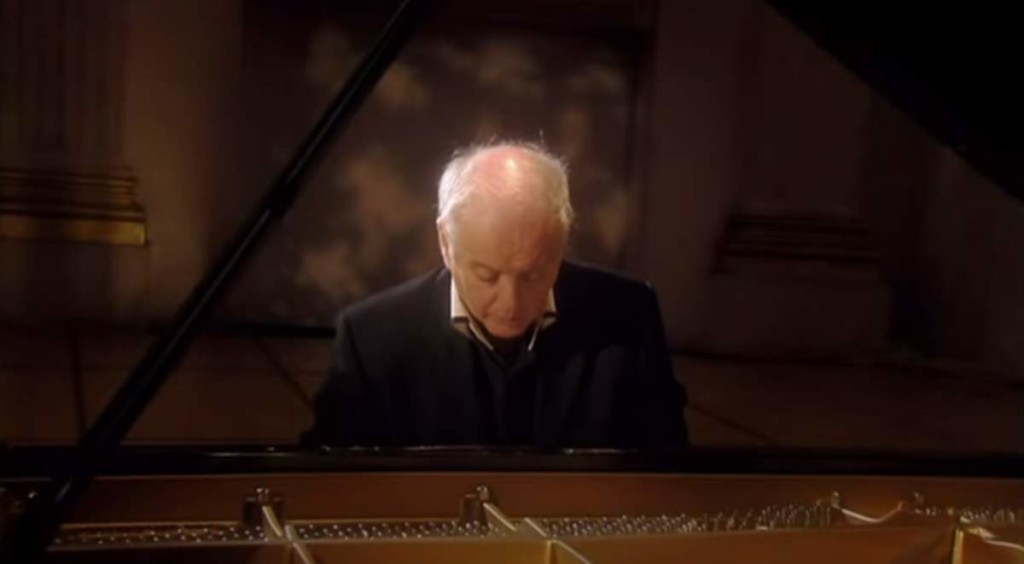Hungarian-born classical pianist Petra Somlai performs Ludwig van Beethoven’s Piano Sonata No. 8 in C minor, Op. 13, commonly known as the Sonata Pathétique. Recorded on November 5, 2016. Somlai plays a fortepiano built by Chris Maene in 2000, based on a fortepiano made by the famous 18th-19th century piano builder Gabriel Anton Walter (5 February 1752 – 11 April 1826, see notes 1). The piece is one of Beethoven’s most celebrated compositions.
Beethoven’s Piano Sonata No. 8 in C minor, Op. 13, “Sonata Pathétique”
Beethoven wrote this piece in 1798 when the was 27 years old. It was published in 1799. Beethoven dedicated the work to his friend Prince Karl von Lichnowsky (1761-1814), the second Prince Lichnowsky and a chamberlain at the Imperial Austrian court who is remembered for his patronage of music and his relationships with Wolfgang Amadeus Mozart and Ludwig van Beethoven.
Some sources attribute the title “Pathétique” to Beethoven himself, while others state that the title was given by the publisher of the sonata, who was so impressed by its tragic sonorities that he proposed Beethoven the name Pathetique.
Movements
The Sonata Pathétique has three movements:
- Grave: Allegro di molto e con brio. The first movement is opened by a slow introduction (Grave) containing the main motif found in movements 1 and 3. The exposition, marked Allegro di molto con brio, is in 2/2 time (alla breve) in the home key of C minor and features three themes. Theme 1 features an aggressive rocket theme covering two octaves, accompanied by constant tremolo octaves in the left hand.
- Adagio cantabile. This movement exemplifies the expressive Adagio style of many slow movements in the classical period. The famous cantabile melody is played three times, always in A♭ major, separated by two modulating episodes; the movement is thus a simple rondo rather than the sonata form more common for movements of this seriousness. The first episode is set in F minor (the relative minor of A♭ major), further modulating to E♭ major before returning to the main theme. The second episode begins in A♭ minor and modulates to E major. With the final return of the main theme, the accompaniment becomes richer and takes on the triplet rhythm of the second episode. There is a brief coda.
- Rondo: Allegro. The sonata closes with a cut-time movement in C minor. The main theme closely resembles the second theme of the Allegro of the first movement: its melodic pattern is identical for its first four notes, and its rhythmic pattern for the first eight. There is also a modified representation of the melody from the second movement, so it connects all three movements together. The movement’s sonata rondo form includes a brief coda. The three rondo episodes are in E♭ major, A♭ major, and C major. The common use of sforzando creates a forceful effect.
Beethoven’s Pathetique may very well have been inspired by Mozart’s piano sonata K. 457 since both compositions are in C minor and have three very similar movements. This is, however, just a theory since musicologists don’t seem to come to an agreement on this issue, especially since the unique connection of motifs throughout the sonata constitutes a major step forward from Haydn or Mozart’s creation. Beethoven’s Pathetique still remains one of his most popular sonatas, even 200 years after its composition.
Notes
- The Grove Dictionary of Music and Musicians (an encyclopedic dictionary of music and musicians) describes Gabriel Anton Walter as “the most famous Viennese piano maker of his time”. The work has gone through several editions since the 19th century and is widely used. In recent years, it has been made available as an electronic resource called Grove Music Online, which is now an important part of Oxford Music Online.
Sources
- Piano Sonata No. 8 (Beethoven) on Wikipedia
- Anton Walter on Wikipedia


